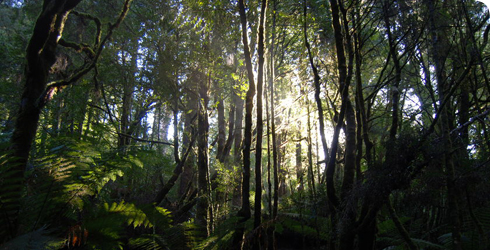Behaviour
Feeding
Like all Onychophora the giant velvet worm is entirely carnivorous and completely lacks the ability to digest vegetable matter.
It consumes a wide variety of the macrofauna typically present within its rotting log habitat such as termites, crickets and amphipods.
Migration
Emergence from the shelter and relative safety of the rotting log habitat occurs for mating, dispersal and to feed on other forest litter invertebrates. While they are outside the log habitat velvet worms are most at risk of desiccation, and they are believed to disperse solely via the leaf litter zone.
Associations
The giant velvet worm is saproxylic, which means that it is dependent upon the deadwood habitat in which it primarily resides. The rotting logs provide this carnivorous species with abundant prey.
Giant velvet worms produce and eject a sticky mucoid glue from apertures near the leg bases which has the role both of prey capture and acting as an anti-predatory device against enemies such as spiders.
